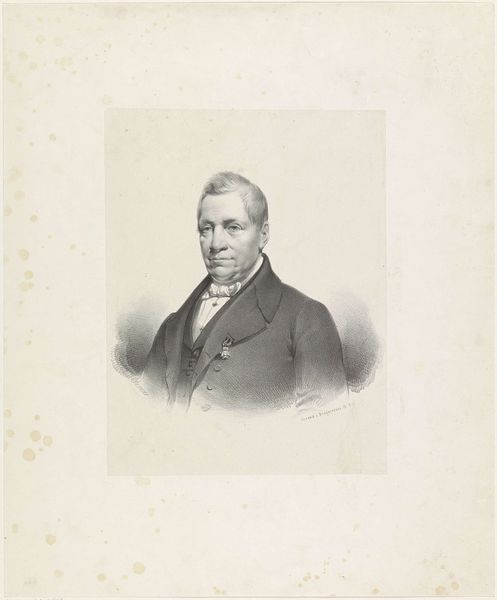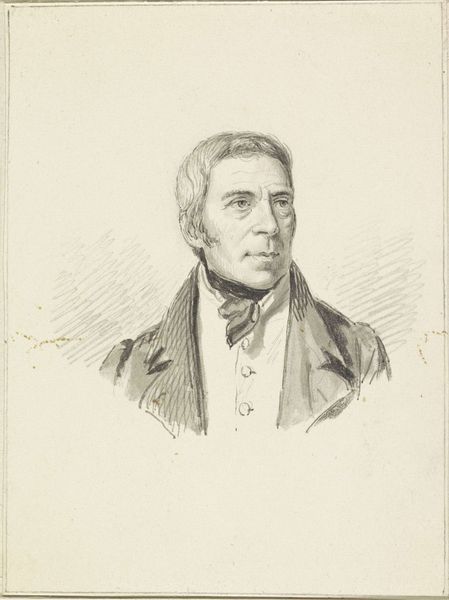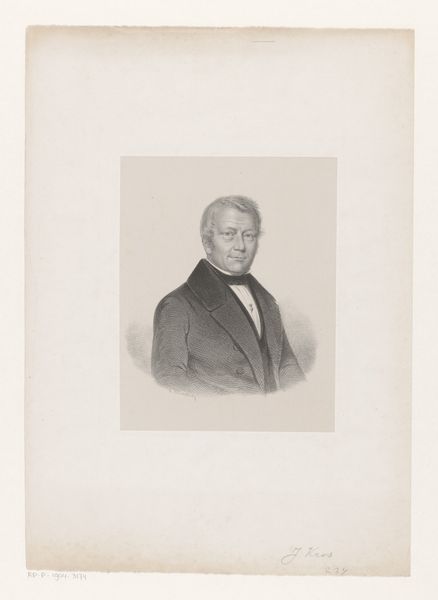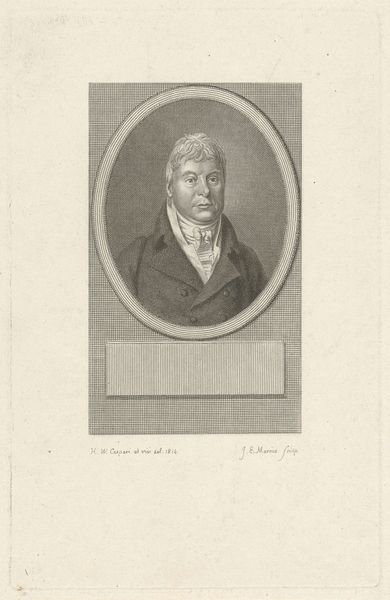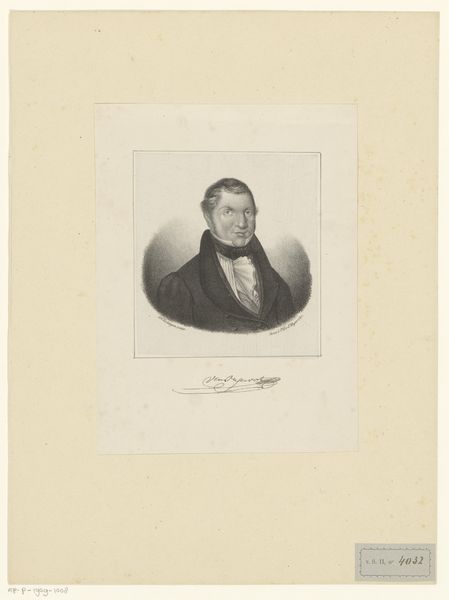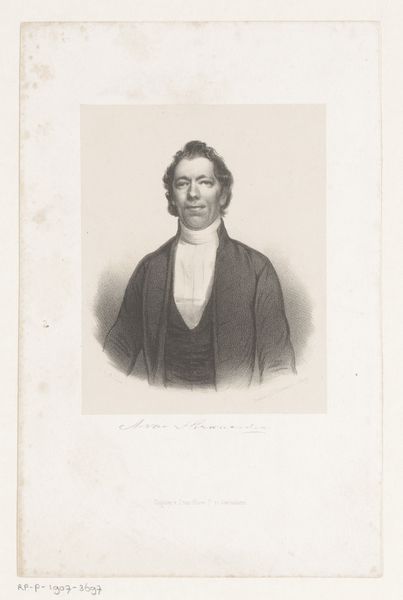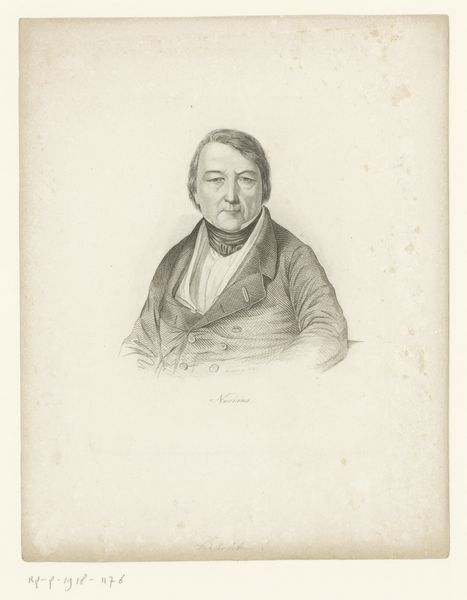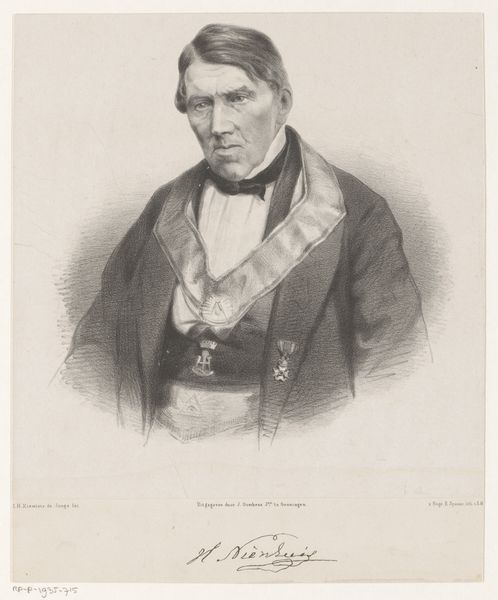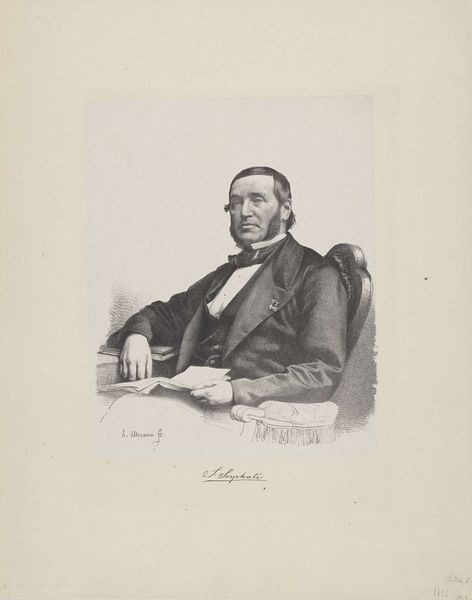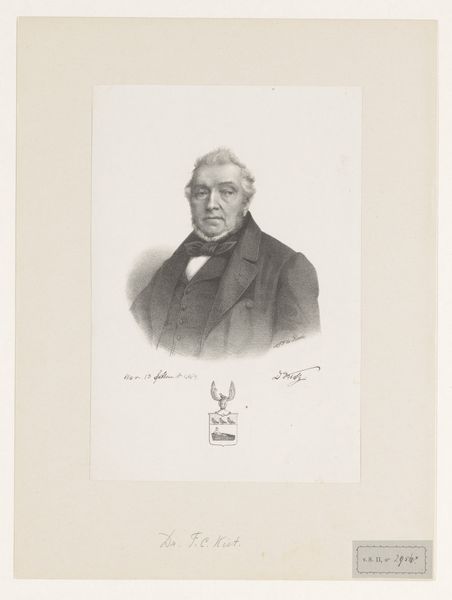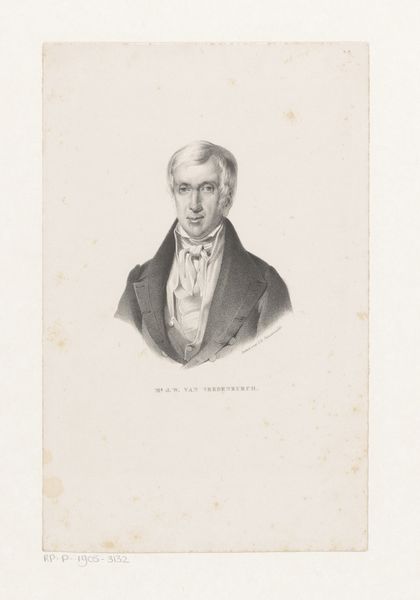
drawing, pencil
#
portrait
#
pencil drawn
#
drawing
#
amateur sketch
#
facial expression drawing
#
light pencil work
#
pencil sketch
#
portrait reference
#
pencil drawing
#
pencil
#
portrait drawing
#
pencil work
#
tonal art
#
academic-art
#
realism
Dimensions: height 240 mm, width 190 mm, height 375 mm, width 290 mm
Copyright: Rijks Museum: Open Domain
Curator: Look at this quietly compelling portrait, "Portret van Th. Sanders," made sometime between 1827 and 1907. The Rijksmuseum holds this pencil drawing attributed to an anonymous artist. Editor: There's an interesting tranquility to it. The light pencil work lends it an approachable air, almost like a beloved family document recovered from an archive. It speaks volumes about intimate memory, yet the man seems... somewhat stiff in posture. Curator: The stiffness probably has to do with convention. Notice the collar – indicative of a particular social standing, perhaps connected to the church. Consider, too, how the visual vocabulary around male representation during that time expected a degree of stoicism and formality to communicate status. The image isn’t just about an individual. It speaks about a social archetype. Editor: Precisely. The starkness draws attention to systems of power, perhaps unintentionally. Is there anything known about the symbolism inherent to his clothing, anything that adds historical depth? The cut of his jacket, even the shading employed around his face – do these amplify messages beyond mere physical depiction? Curator: Definitely. Even something as apparently straightforward as portraiture is deeply encoded. The meticulous attention given to his clerical garb transmits values and a certain level of perceived moral standing within the social structures of the time. A sharp mind would’ve been highly attuned to these sartorial symbols. The way light and shadow plays across his face evokes a sense of respectability. Editor: I notice that despite this man’s social position, he is rendered somewhat ordinary-looking. He doesn't come across as traditionally beautiful, but there’s dignity. His visual depiction breaks with traditions of power in how “idealized” or unblemished the sitter is typically presented. It feels subtly… revolutionary for its time. Curator: That’s insightful. Maybe the drawing reflects the emerging societal emphasis on individuals – regardless of beauty. What’s lasting is this visual fragment, triggering all sorts of meditations on existence, memory, social status, even faith. Editor: Indeed. Art constantly challenges us to see power dynamics reflected through material choices, and this piece – seemingly simple on the surface – resonates with those undercurrents, encouraging discourse still relevant today. It stays with me.
Comments
No comments
Be the first to comment and join the conversation on the ultimate creative platform.
